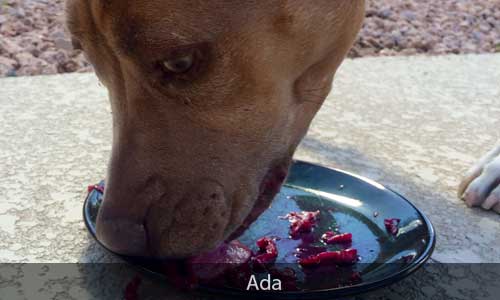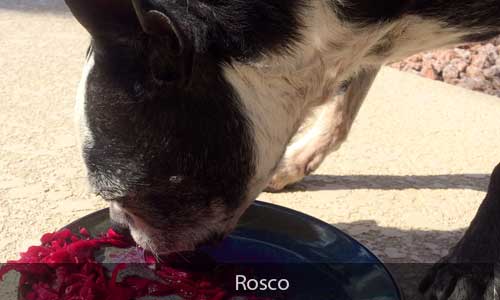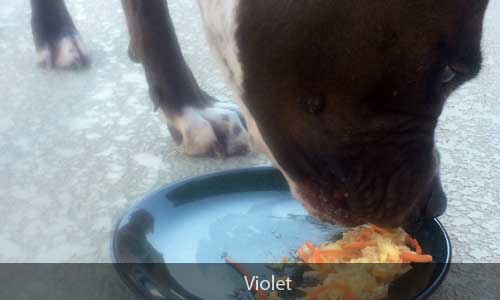Finicky Pets Might Dislike This, but It Helps Fight Tumors
Can help boost your pet's ability to fight cancer, shed toxins, cleanse the blood, and more. The nutrients are amazingly bioavailable, far better than any supplement. So it's worth trying to get them to eat it. How to do it right, whether or not your pet loves the first bite.

STORY AT-A-GLANCE
- Dogs, and to a lesser extent cats need vegetables for the roughage, phytonutrients, and antioxidants they provide, which mimics what would be found in their prey’s digestive tracts
- One of the best ways to provide vegetables to pets is by fermenting them. Fermented veggies are optimally digestible for dogs and cats, and they also offer powerful probiotic benefits
- Fermented vegetables are also potent chelators and detoxifiers, and the fermentation process makes the nutrients inside the veggies more bioavailable. Also, the lactic acid produced by fermentation is a chemical repressor that fights cancer cells without harming healthy cells
- Some pets willingly eat fermented vegetables, while others need a bit of prodding. Even if your pet is wild about her fermented veggies right off the bat, it’s important to start with very small amounts and build up gradually to 1 to 3 teaspoons per 20 pounds of body weight. It’s also important not to force vegetables on a pet who simply refuses to eat them
Editor's Note: This article is a reprint. It was originally published August 31, 2014.
Vegetables are important to the health of pets. Dogs need them because they contain essential nutrients (such as powerful antioxidants) not provided by other foods like meat and bones. Wild dogs, wolves, and coyotes consume grasses, berries, and wild fruits and vegetables to acquire these important nutrients.
Cats in the wild eat like the strict carnivores they are, only consuming the pre-digested vegetable matter found in the GI tracts of their prey. In order to mimic their natural diet, only very small amounts of veggies are added to commercial and homemade cat food. The goal is to provide a biologically appropriate amount of roughage, phytonutrients, and antioxidants.
There are a few different ways to prepare vegetables to make them optimally digestible for dogs and cats, and one of those ways is to ferment them. Fermentation actually imitates the digestion of plant foods in the GI tracts of the small prey animals dogs and cats eat in the wild.
Fermented Veggies Offer Probiotics and Beneficial Nutrients
Fermented vegetables have a very long history in virtually every native diet, and have always been highly valued for their health benefits. But what many pet guardians don't realize is that fermented veggies can also be beneficial in keeping pets healthy, thanks in large part to their probiotic effect. As I've discussed in many videos and articles here at Healthy Pets, beneficial gut bacteria play a critical role in dealing with digestive issues and a wide range of other health problems in dogs and cats.
Through the ages, humans have consumed large amounts of probiotics – not in supplement form as many of us do today – but in the form of fermented foods. The fermenting of vegetables produces beneficial microbes (probiotics) that help balance gut bacteria. This in turn boosts your pet's overall immunity because a healthy gut equals a healthy pet.
And fermented vegetables not only provide a wider variety of beneficial bacteria than probiotic supplements, they also provide far more of them. About the highest level of colony-forming units you'll find in human probiotic supplements is 10 billion. But fermented veggies produced by probiotic starter cultures can produce 10 trillion colony-forming units of bacteria. That means one human serving size of fermented veggies provides the same benefit as an entire bottle of high-potency probiotics.
Fermented vegetables are also potent chelators and detoxifiers, so they help rid your pet's body of a wide variety of toxins, including heavy metals. The fermentation process makes the nutrients inside the food more bioavailable as well. It produces vitamin C, B vitamins, vitamin K2, and enzymes (which all support metabolic activity), choline (which balances and nourishes the blood), and acetylcholine as well. In addition, the lactic acid produced by fermentation is a chemical repressor that fights cancer cells without harming healthy cells.
Will My Pet Eat Fermented Veggies? How Much Should I Feed?
Some dogs and even the occasional kitty will eat fermented veggies on their own. Others simply will not touch them because the taste is pretty pungent. It's kind of like a tangy form of sauerkraut.
Some dogs will eat anything, so you can just add some fermented vegetables to their regular food, and they'll do fine. Other dogs are more cautious, and they may want nothing to do with this strange new food you're offering! Whatever your pet's attitude, it's important to introduce fermented veggies gradually and in small quantities.
If your pet is slow to accept new foods, try starting with a teeny, tiny amount — as little as half a teaspoon mixed in with his regular food. If he eats it, then try increasing the amount a little each day until you're up to around 1 to 3 teaspoons a day for every 20 pounds of body weight. It's important to honor your pet's pace of acceptance for this new food. It's definitely strange tasting, so if your pet doesn't like it, don't force it.
If you happen to have a pet who eats anything, you can just feed the fermented veggies directly. I put fermented vegetables on a plate, and my dogs gobble them up. They don't bat an eye about it; they love any type of food. It's a great way to get probiotics into their diet naturally just by offering them a dollop of veggies on a daily basis. Dr. Becker's pack eating their fermented veggies:




Other pets, however, will refuse all strange food – even a tiny amount of veggies. For those dogs (or cats), you should continue giving probiotic supplements instead of offering food sources of probiotics.
Feeding too many fermented vegetables at one time can cause GI upset. If your dog or cat simply loves them, that's great, but you still want to start with a small amount and work up slowly to a teaspoon or two (or more, for larger dogs) per day. You can slowly increase the volume of fermented foods as your pet's digestive system adapts.
The liquid produced by the fermentation process is a rich source of lactic acid and other nutrients. You can add it in small amounts to your pet's food as well.











